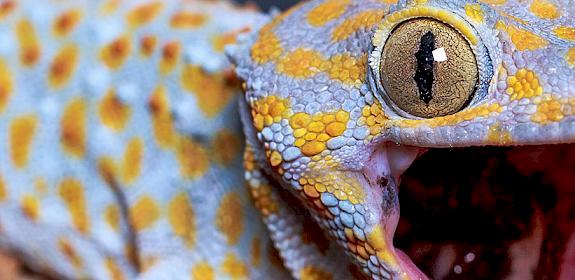The state of global biodiversity—where next and what role for wildlife trade?
Cambridge, UK, 18th September 2020—A sobering new report was launched earlier this week by the Convention on Biological Diversity (CBD). The Global Biodiversity Outlook (GBO-5) assesses progress against the nature conservation commitments made by world governments in 2010 for the decade ahead—the so-called Aichi biodiversity Targets.
The Aichi targets covered conservation, sustainable use and equitable benefit sharing from biodiversity, but the new report suggests that none of the 20 Aichi biodiversity Targets will be fully met in 2020.
GBO-5 highlights a collective global failure to address the biodiversity crisis humanity is facing. Governments, businesses and individual citizens need to act, and we need to act fast—this report demonstrates that solutions are in reach, but the time left for decisive action is declining fast.”
Steven Broad, Executive Director, TRAFFIC
The GBO-5 report calls for a shift away from “business as usual” across a range of human activities. The report outlines eight transitions that recognise the value of biodiversity, the need to restore the ecosystems on which all human activity depends, and the urgency of reducing the negative impacts of such activity.
A number of these transitions point to the importance of ensuring the sustainability, legality, traceability and safety of trade in wild species, including combatting the degradation of land and forest, transitioning towards sustainable food systems, sustainable fisheries, and biodiversity-inclusive One Health approach.
Meanwhile, the ongoing COVID-19 pandemic has dramatically highlighted the potential dangers associated with poorly managed trade in wild animals.
Just days ahead of the GBO-5 launch, WWF released its 2020 Living Planet Report which documents the precipitous decline in monitored populations of species between 1970 and 2016. The Report further underlines the urgency to act. Illegal and unsustainable trade and overharvesting of species is an important contributing factor to many declines but despite this, there were no specific targets on the trade and use of wild species among the Aichi biodiversity targets.
Wildlife trade encompasses a wide range of species and products: timber for construction, species for display, ornamentation, and as pets, skins used in the fashion industry, plant ingredients in cosmetics and health products, plant and animal products in medicine and food, and more.
With the global assessments identifying overexploitation by people as the key driver of species loss, a logical response might appear to be to stop exploitation and use of wildlife. The opposite, somewhat counterintuitively, is often true: sustainable and equitable use and legal trade in species brings about benefits both to conservation and livelihoods.
Why is this approach to addressing pressing conservation and development issues not more widely practiced? The conditions of what makes “good” wildlife trade work are complex, often with obstacles that are seemingly hard to overcome. Consumers, businesses, and governments are often ignorant of the scale of and threats posed by illegal and unsustainable wildlife trade, or the benefits deriving from sustainable and legal trade: the trade in wild species is often “hidden” in products and along supply chains. Despite being a contributor to economic development—from rural economies, through to export-import taxation and levies—wildlife trade threats and benefits are absent in narratives such as “natural capital”, “circular economy”, or “sustainable consumption and production”. The knowledge base, e.g. on the value of wildlife trade in supply chains and economies, needs to be developed and integrated into the relevant frameworks.
Wildlife consumer behaviour change approaches are often directed at reducing demand for endangered wildlife products and are oriented towards a particular “wildlife consumer”. While this is essential, a complementary approach is needed to encourage sustainable consumption to help change consumer choice towards purchasing, using and consuming verifiably sustainable and legally traded species and products.
Much of the trade in wildlife is unregulated, and even where it is, regulations may have been developed with no consideration of the impact on stakeholders; they may be poorly implemented or the trade unsustainable. Addressing this also requires solutions that respond to underlying challenges such as corruption and lack of good governance. The evidence of how responsible wildlife trade practices assist, and in some cases drive the reduction of illegal wildlife trade, needs to be demonstrated more widely.
“It is essential that one of the key drivers of biodiversity decline—illegal and unsustainable trade in wild species—is recognised among the Targets of the post-2020 Global Biodiversity Framework”, said Steven Broad, Executive Director, TRAFFIC.
“It is also crucial to recognise the role that sustainable and legal harvest, use and trade in wild species plays in both contributing to species' long-term conservation, and providing multiple benefits for people reliant on use and trade of these species.”
TRAFFIC’s work around tools to enable sustainable, legal and traceable wildlife trade, such as the FairWild Standard for sustainable wild harvesting of plants and fungi and a traceability system for shark products, are available to help governments with the practical implementation of ambitious commitments under new draft Targets— the post-2020 draft monitoring framework—currently being formulated ahead of the postponed 15th Conference of the Parties to the CBD, to be held in Kunming, China.
Notes:
Earlier this year, TRAFFIC submitted detailed views on the post-2020 draft monitoring framework.





